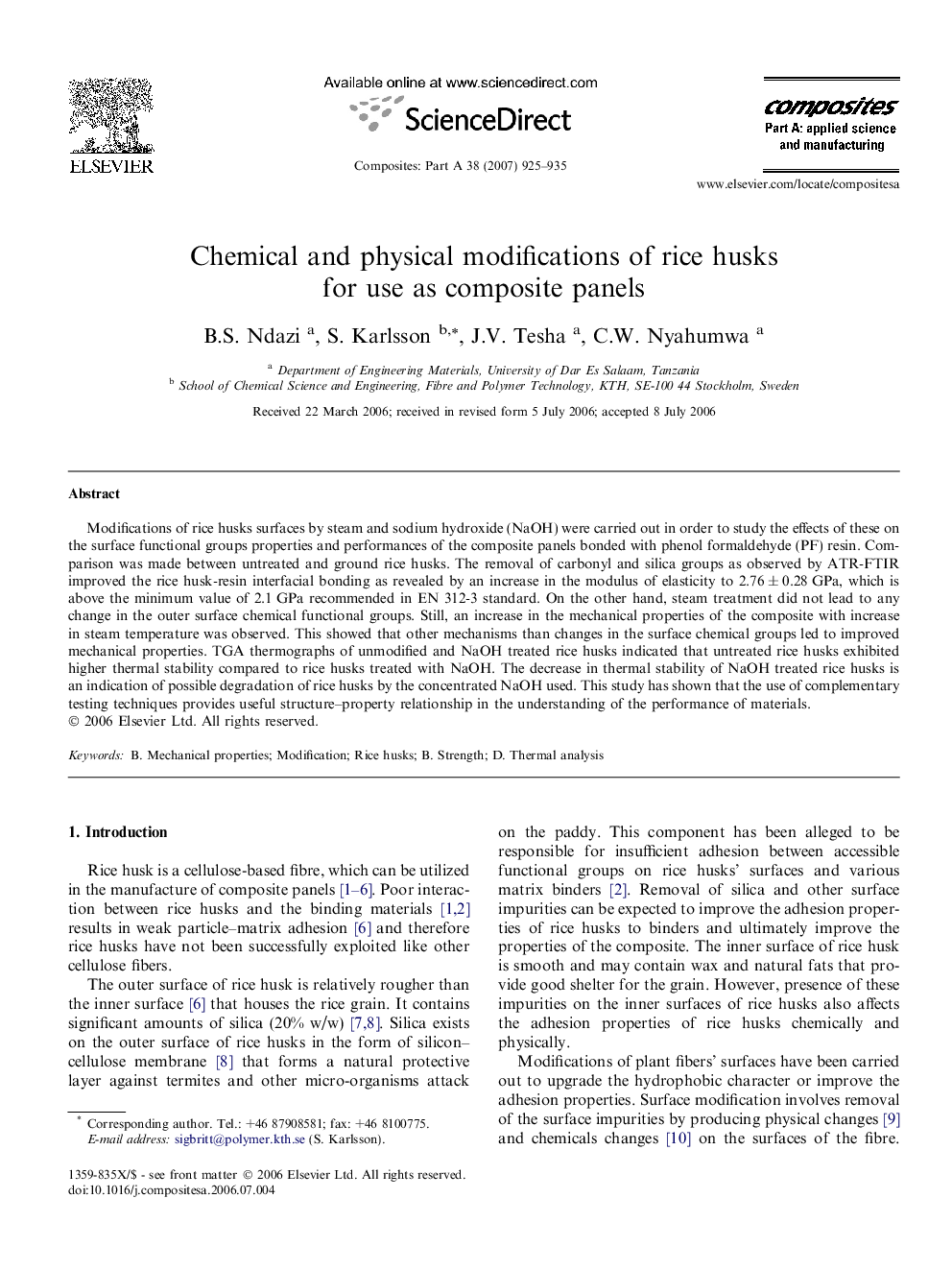| Article ID | Journal | Published Year | Pages | File Type |
|---|---|---|---|---|
| 1467878 | Composites Part A: Applied Science and Manufacturing | 2007 | 11 Pages |
Modifications of rice husks surfaces by steam and sodium hydroxide (NaOH) were carried out in order to study the effects of these on the surface functional groups properties and performances of the composite panels bonded with phenol formaldehyde (PF) resin. Comparison was made between untreated and ground rice husks. The removal of carbonyl and silica groups as observed by ATR-FTIR improved the rice husk-resin interfacial bonding as revealed by an increase in the modulus of elasticity to 2.76 ± 0.28 GPa, which is above the minimum value of 2.1 GPa recommended in EN 312-3 standard. On the other hand, steam treatment did not lead to any change in the outer surface chemical functional groups. Still, an increase in the mechanical properties of the composite with increase in steam temperature was observed. This showed that other mechanisms than changes in the surface chemical groups led to improved mechanical properties. TGA thermographs of unmodified and NaOH treated rice husks indicated that untreated rice husks exhibited higher thermal stability compared to rice husks treated with NaOH. The decrease in thermal stability of NaOH treated rice husks is an indication of possible degradation of rice husks by the concentrated NaOH used. This study has shown that the use of complementary testing techniques provides useful structure–property relationship in the understanding of the performance of materials.
